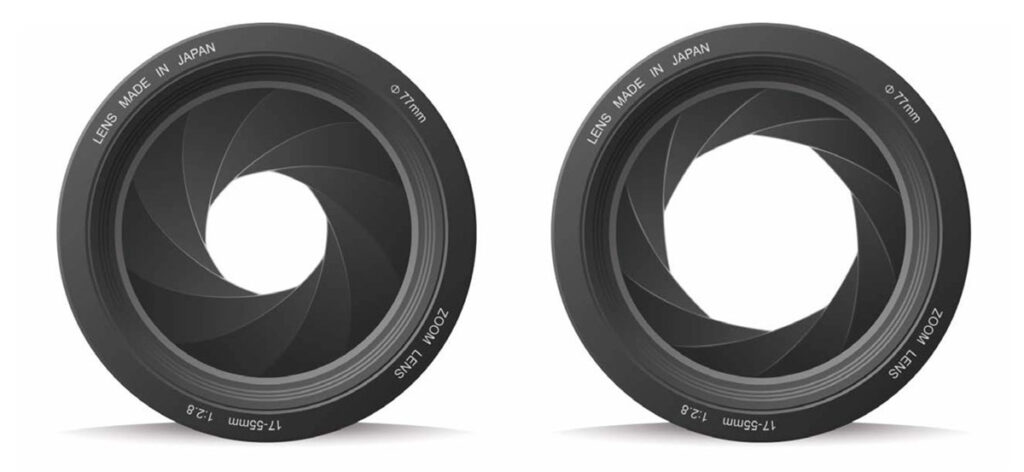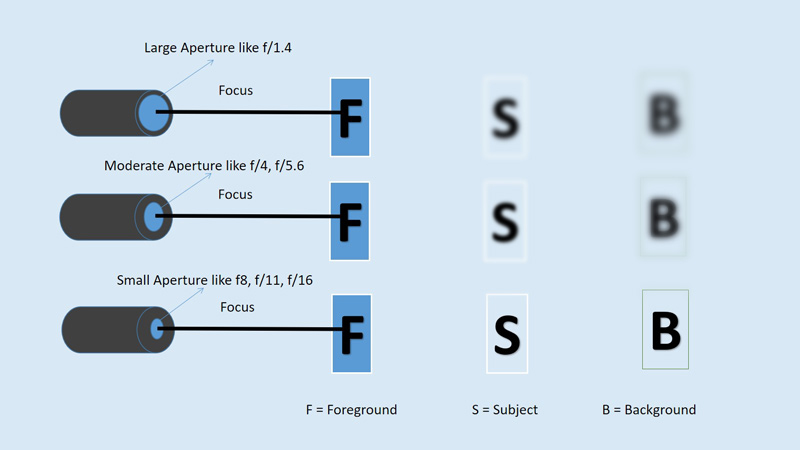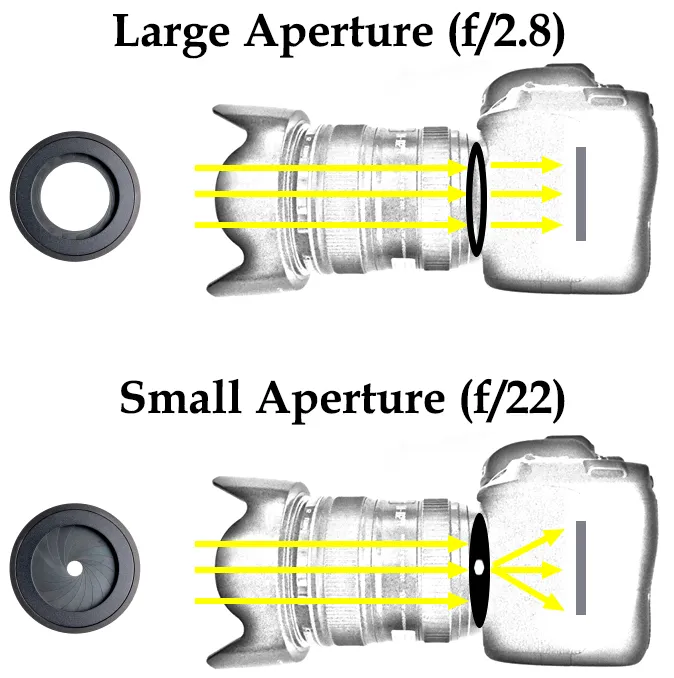Aperture – a process that regulates the reflected light on the sensor of the camera. It comes with the lens as an attachment. Some angular blades (5 or 8) are combined and create an opening behind the lens. The blade mechanism is handled by a wheel near the shutter release button. It rotates clockwise and anti-clockwise. The rotation of the wheel regulates the opening position of the blades.

Aperture – a pillar of exposure
In photography, exposure is the combination of aperture, shutter speed, and ISO. Exposure is responsible for the brightness of the light. As the aperture changes, the opening of the lens regulates the light to fall into the sensor of the camera. The full opening aperture invites maximum light on the sensor. It may cause overexposure to a photograph. The small opening may darken or underexpose the photograph.
Aperture and F-stop
The opening of the combined blades is denoted by F-stop. “F” stands for the focal length of the view of the lens. Hence, the diameter of the aperture is responsible for entering the light into the sensor.
At present, f-stop has some values like f/1.4, f/2, f/2.8, f/4, f/5.6, f/11, and f/16. Now, the contradictory part in f/1.4 means light in the sensor. Whereas F/22 is the minimum opening of aperture values. It has been invited to minimum light in the sensor.

Note
Suppose a composition demands shutter value 1/200s, ISO 100, and aperture f/8. The other pillars of the exposure are fixed. If you increase (f/1.4) the opening of the lens, the subject may come with overexposure or excessive light in the picture. If you capture the composition with f/22, it turns into an underexposure or dark picture.
Aperture and Depth of Field (DOF)
Depth of field means the amount of area in a composition that is in focus. If you want to manipulate the general rule of DOF, adjust the aperture opening. The full-grown aperture like f/1.4 makes a little place in focus rather than the general focus DOF.

Whereas f/11 or f/16 captures the maximum area of the composition in focus than the general focus DOF. Hence, it is a proven condition that more opening of the aperture (f/1.4) makes the foreground and background more blur than the subject.
It helps to produce the more attractive result in portrait photography. On contrary, landscape photographers want maximum areas (foreground-subject-background) in focus (f/8, f/11, or f/16).
Sharp image and aperture
When light from a point source passes through a small circular aperture, it produces a diffuse or blurry point on the sensor. It is called diffraction. Hence, if we capture an image with f/16 or f/22, the image will be not razor sharp.
The aperture setting depends on the photographer. Because they are the best judges of their compositions. None like a blurry picture. They want a razor-sharp image. Therefore, set the aperture based on your experience and find out the sweet point (maybe f/5.6 or f/8, etc.) of the aperture.

Variations of sensors and the role of the aperture
At present, there are two types of sensors available. The first one is a crop sensor or DX format and the other one is called a full frame or FX-format sensor. The FX-format sensor is bigger than the DX format. So, the crop sensor produces more diffraction than the DX sensor.
A quick tip for photographers is to avoid diffraction. Set the aperture to f/5.6 or f/8. It produces minimal diffraction in the image. It will produce a sharper image than f/16 or f/22. But it all depends upon the camera sensor, aperture f-stop, and your experience with test shots. A chart for aperture size and DOF is given below:
| F-number | Aperture Size | Exposure | Depth of Field |
|---|---|---|---|
| f/1.4 | Very large | lot of light | Very thin |
| f/2 | Large | Half as much light as f/1.4 | Thin |
| f/2.8 | Large | Half as much light as f/2 | Thin |
| f/4 | Moderate | Half as much light as f/2.8 | Moderately thin |
| f/5.6 | Moderate | Half as much light as f/4 | Moderate |
| f/8 | Moderate | Half as much light as f/5.6 | Moderately large |
| f/11 | Small | Half as much light as f/8 | Large |
| f/16 | Small | Half as much light as f/11 | Large |
| f/22 | Very small | Half as much light as f/16 | Very large |
Conclusion
It is one of the pillars of exposure. It determines the quantity of light invited into the sensor. It helps to produce a razor-sharp image. It is the pivotal role of the DOF. As a beginner, set your camera in aperture priority mode and observe the photographs critically. Therefore, practice, practice, and practice make you perfect at judging the best aperture in a specific location. Play with the aperture. Have a great time.

gain my knowledge. Thank you.